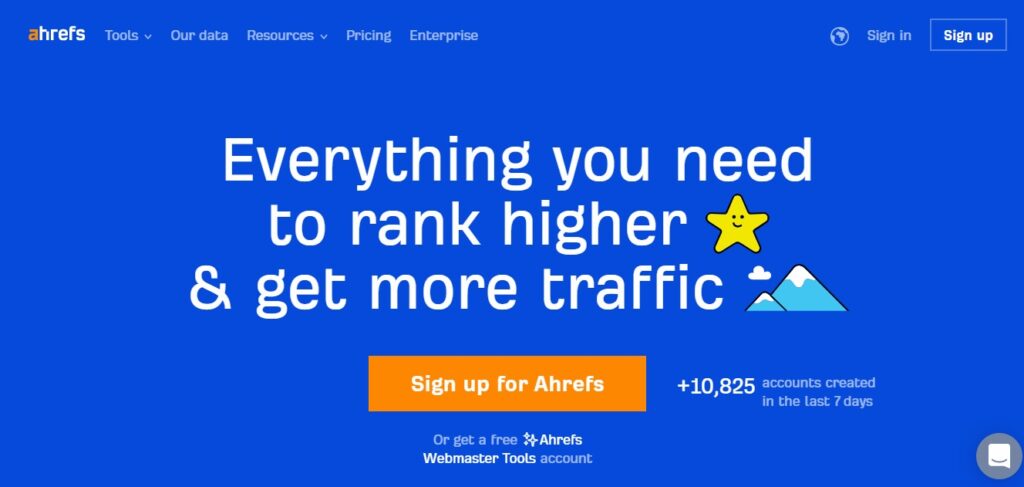What is Web Traffic?
The amount of visitors to a website over a given time period is referred to as ” Web Traffic”. It is possible to accurately track website traffic and separate it into regular and one-time users. One-time visitors are those who come to a website only once and are typically brought there by a search engine query, whereas regular visitors are engaged clients who provide constant traffic.
Visits, also referred to as “sessions,” are a standard technique to evaluate how successfully an online business is able to attract customers.
A website’s primary objective is usually to attract as many visitors as it can. The number of visits to a website and its financial success are frequently correlated because increased traffic frequently leads to higher advertising earnings or sales. The effectiveness of your website is crucial in sustaining consistent traffic. Both the design and the content must be of the highest calibre and benefit the audience. The popularity of a website is frequently determined by its unique visitors, or individual users, with several visits from the same user only counting once.
Why is website traffic important?
Keeping track of your internet traffic is an excellent marketing tactic for your company. Website traffic is essential for a variety of reasons. The more visitors your site receives, the more prospective consumers you will have. The number of visitors to your website represents the amount of opportunities for your company to make an impact, generate qualified leads, share your brand, and establish relationships. Building relationships and trust can ultimately lead to the sale of your product or service, the acquisition of new clients, and the expansion of your business.
More internet traffic does not always imply more money. More website traffic can help your company grow, extend its product line, create new locations, and develop new services and products.
What are the types of Website traffic?
In online marketing, knowing how many people are visiting your website is important, but you also need to know where they are coming from. You may segment your audience and determine which of your initiatives has the most return on investment by identifying various sorts of web traffic.
Organic Traffic
When a user searches on Google or another search engine and clicks on one of the links on the results page, this is referred to as organic traffic.
In the long run, this kind of online traffic may represent a significant portion of visitors. It is vital to use search engine optimization (SEO) strategies in order to increase organic traffic.
It’s a common misconception that organic traffic is cost-free. Even though you do not directly pay for each click, SEO website optimization requires a significant initial time and resource commitment as well as ongoing upkeep.
Direct Traffic
The volume of website traffic that comes from people who access a URL on your site directly from their browsers is known as direct traffic. It is described as traffic that has come on your website with no source or information in Google Analytics (GA). Visitors from a variety of places make up direct traffic:
- Those who have accessed your website directly by typing its URL into their search bar.
- People who arrived by using the URL they had saved to their bookmarks for your website.
- Individuals who have used email software to open an email or click on a link in a non-indexed document.
Your URLs should be neat, straightforward, and simple to remember in order to avoid losing possible direct visitors. Additionally, you might ask visitors to save your website for later visits.
Referral Traffic
People that visit a website by clicking on a link from another website, such as a blog or forum, are referred to as Referral Traffic.
Participating in active link-building efforts, such as guest blogging or submitting your site to directories, will increase referral traffic. To prevent potential penalties, it’s imperative to consider Google’s link policies.
Email Marketing
In digital marketing, email traffic is the type of traffic that results from your email marketing initiatives. Due to the fact that it comes from leads and customers you already have, it is one of the most significant sources of traffic to your website.
Email campaigns offer a variety of statistics regarding your delivery rate, opening rate, clicks on links, total clicks, unique clicks, etc.
Social Networks
Visitors who land on the page after clicking on a social media post are referred to as Social Network traffic. You can differentiate between various social networks and look a little deeper into click and engagement statistics.
Paid Media
Any consumer that visits your website after you have paid for advertising promotions is referred to as Paid Media traffic. Many platforms, including search engines, social media platforms, and media networks, provide paid traffic services. Pay Per Click (PPC) advertising, which uses Google Ads, is one of the most frequent types of paid traffic. Other methods of advertising include Pay Per Acquisition (PPA), Cost Per Thousand (CPM), and banner adverts.
How can I check my website traffic?
The most important tool for monitoring and measuring website traffic over time is Google Analytics. Google offers a free website traffic checker tool, and it is one of the primary places where any SEO expert may acquire the data they require about website traffic.
Google provides comprehensive data on all relevant aspects of advertising, content, and revenue. You can use this information to modify your tactics and improve your website’s search engine optimization to drive more traffic.
Top 5 Tools for Website Traffic Analysis
Google Search Console
Google Search Console is a free tool that you may use to examine the traffic coming from search engines. This tool provides you with a thorough understanding of how search engines perceive your website. It displays the volume of views, clicks, click-through rate (CTR), and average position of your terms in search engine results. This aids in your understanding of the search volume and keywords for which you are ranking online. Using this knowledge will enable you to increase traffic.
For instance, If you discover that you are currently at position 11, you might optimise the blog article in an effort to get it to the top of the search results page. Additionally, you may check for mistakes, verify which pages are indexed, and more. You can start viewing your website data as soon as you add your website to Google Search Console.

SEMRUSH
SEMRUSH is a complete traffic analysis and competitor analysis tool. It is the best tool for tracking and analysing website traffic. You may view a thorough breakdown of your competitor’s overall traffic by entering their URL.
You may view crucial website information such as the evolution of monthly traffic volume, traffic distribution by nation, top traffic-generating phrases, and more.
The unique visitors, total visits, average visit length, number of pageviews, and bounce rate for the site are all provided on the Traffic Analytics tab.

Similarweb
SimilarWeb is a website traffic checker that provides an overview of your competitors’ traffic as well as which channels are the most valuable.
Instead of merely giving search traffic, you will receive thorough information on a website’s overall traffic strategy.
When you run a website through the tool, you will receive a breakdown of total traffic, as well as a nation by country report. Aside from organic search traffic, you’ll discover which paid keywords drive visitors to the website, which social platforms are the most profitable, and which display networks the site employs to monetise.

Ahrefs
One of the most well-known SEO tools on the market, Ahrefs is endorsed by companies like Netflix, Uber, and Facebook. You can use it to see how much traffic your competitors are receiving and the factors contributing to their high rankings.
More than 200 million websites are indexed by Ahrefs, which daily crawls more than 6 billion web pages. Although there is a lot of data, you can use these insights to outrank your rivals and increase visitors.
The user interface is really straightforward and welcoming. The tool will retrieve every website information available after you enter the website URL into the search field.
The search overview report provides an overview of a site’s organic search traffic, domain authority, and top competitors.

Ubersuggest
The free and paid Ubersuggest tool from Neil Patel provides a variety of helpful website traffic statistics.
The interface is designed for beginners, and it is simple to use. This application makes keyword research and traffic analysis relatively straightforward, even if you’ve never done either before.
The traffic analyzer function provides you with a thorough analysis of your competitors’ traffic over time, the keywords that are driving the most traffic to their site, and the most visited pages overall.
The traffic report’s various sections can each be explored in further detail. To get a breakdown of each published page on the site and the anticipated monthly traffic it receives, for instance, expand the ‘Top Pages’ results.

Maintaining repeat visitors, attracting potential leads, and acquiring new customers all depend on your website’s traffic. Boost website traffic, stay true to your target market, and improve online conversion rates. All of these things together will assist in making your website successful, which will help your business succeed.
